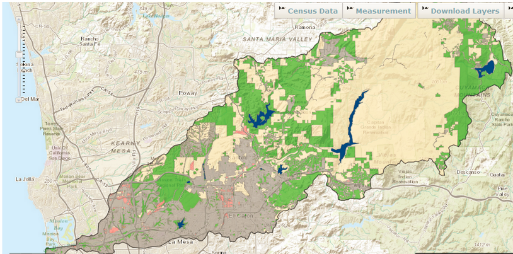Case study for flow-ecology framework kicks off in San Diego

SCCWRP and its partners kicked off a case study in May that aims to demonstrate the utility of using a scientific framework known as the Ecological Limits of Hydrologic Alteration (ELOHA) to evaluate environmental flow requirements in the San Diego River Watershed.
The flow ecology demonstration project will use the ELOHA framework to guide management targets and decision-making regarding flow needs within the 440-square-mile watershed. ELOHA relies on existing hydrologic and biological response data to figure out what are appropriate environmental flows that will support in-stream biological communities.
A kickoff meeting for the project, held May 20, was attended by 20 members of the San Diego River Watershed monitoring workgroup; the full demonstration begins this fall.
The San Diego demonstration project is part of a larger ELOHA analysis that seeks to develop recommended flow objectives for protecting the biological integrity of perennial and intermittent streams across Southern California.
SCCWRP and its San Diego partners will work to apply previously developed ELOHA technical tools to the San Diego watershed, with the goal of building a generic framework that could be implemented more broadly in other areas and watersheds.
During the project, SCCWRP and its partners will recommend to watershed managers specific hydrologic profiles that can support identified biological objectives. Project participants also are aiming to identify additional tools necessary for analysis and modeling, as well as to understand barriers to development of flow targets.
The San Diego River Watershed was selected for the ELOHA demonstration project for a number of reasons, including its active and ongoing watershed monitoring program, its geographical diversity, and an engaged workgroup willing to partner with SCCWRP on the project.
For more information, contact Dr. Eric Stein.
More news related to: Ecohydrology